Rapid urbanization has triggered a sanitation crisis in urban and peri-urban areas, heightening public health risks. The ‘SaniPath Exposure Assessment Tool’, developed by Emory University with the support of the Bill and Melinda Gates Foundation, can be used to assess health risks associated with inadequate sanitation and prioritize sanitation investments by focusing on the exposures that pose significant threats to public health. ITN-BUET, in collaboration with icddr,b, organized a workshop on 18 September 2024, to introduce participants to the SaniPath tool. Attendees included engineers, doctors, researchers, educators, technical experts, and managers from both government and non-government organizations involved in the WASH and public health sectors.
The workshop brought together 33 participants from various organizations, including BASA Foundation, BUET, the Department of Public Health Engineering (DPHE), Dhaka South and North City Corporations, icddr,b, the Institute of Epidemiology Disease Control and Research (IEDCR), Islamic Development Bank (IsDB), Sakhipur Municipality, SKS Foundation, UNICEF Bangladesh, University of Asia Pacific, WaterAid Bangladesh, WHO Bangladesh, and WSUP Bangladesh. Participants attended to learn about the SaniPath tool and share their feedback.
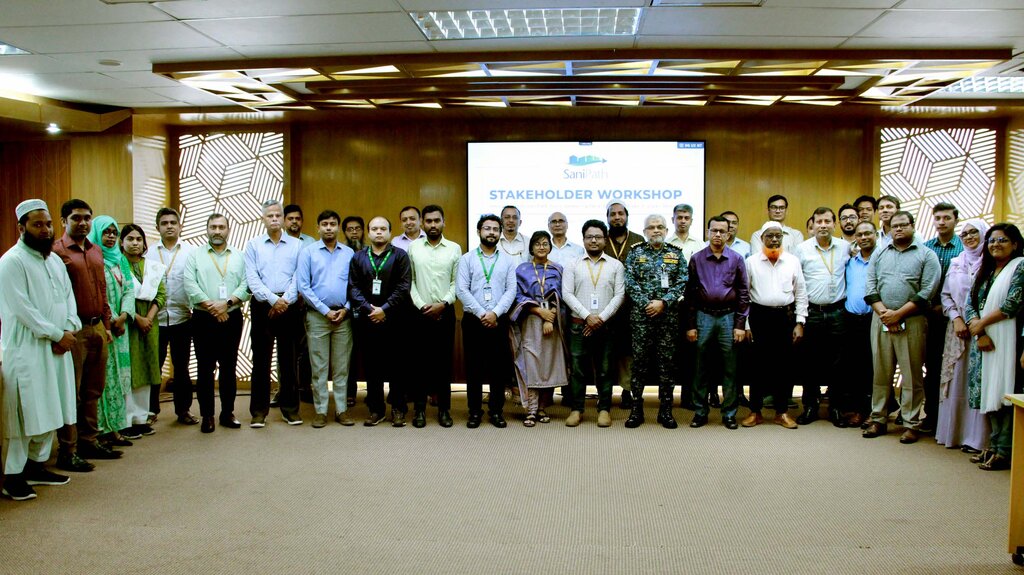
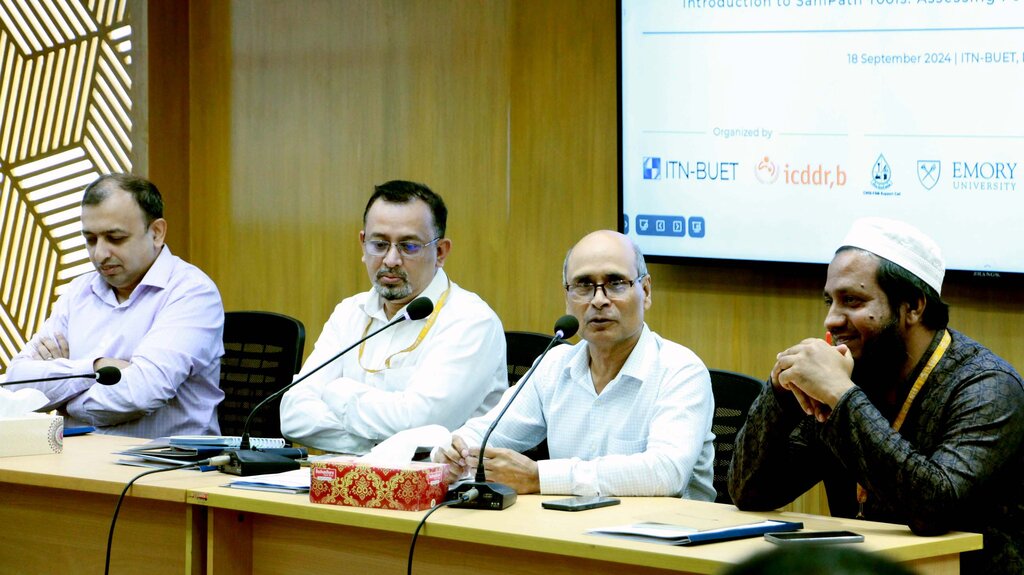
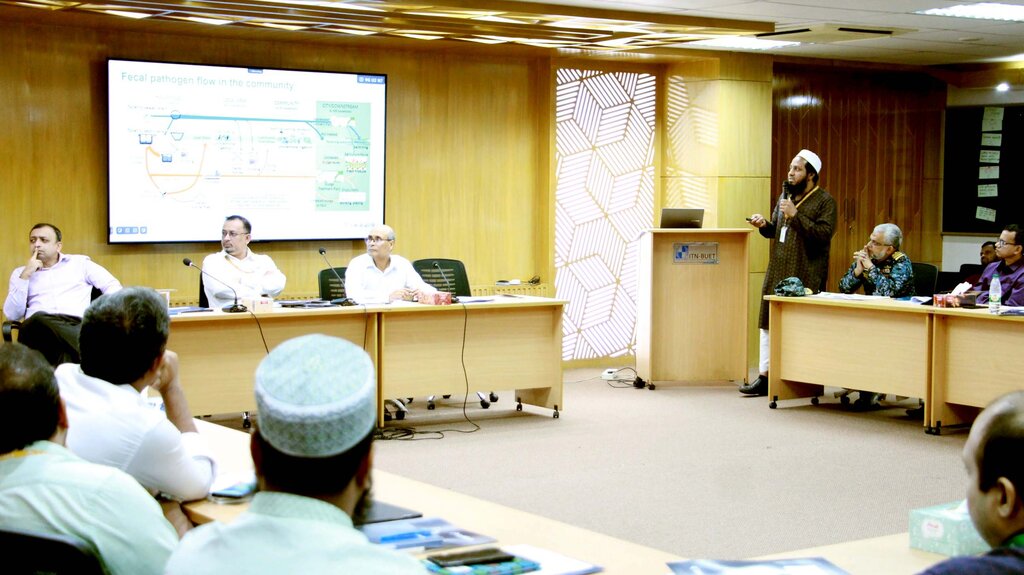
Dr. Tanvir Ahmed, Director of ITN-BUET, and Dr. Md. Mahbubur Rahman, Project Coordinator of icddr,b were present at the event as speakers. Dr. Tanvir Ahmed emphasized that the SFD and SaniPath tools are not interchangeable and additionally, the SaniPath could serve as a valuable supplement to the Sanitation Safety Plan (SSP). Dr. Md. Mahbubur Rahman anticipates that the government will implement this tool nationwide to promote safe sanitation and improve public health.
Dr. Nuhu Amin, Associate Scientist at icddr,b, delivered the keynote presentation on the SaniPath tool. He highlighted that “SaniPath is a user-friendly tool and serves as an ‘add-on’ that can be utilized as a scientific assessment tool for both planning and monitoring purposes.”
Dr. M. Habibur Rahman, Professor, Department of Civil Engineering, BUET, emphasized the importance of considering sample size to ensure accuracy when generating SaniPath results. He also noted that the tool would have been more effective if it included an assessment of people’s hand hygiene practices.
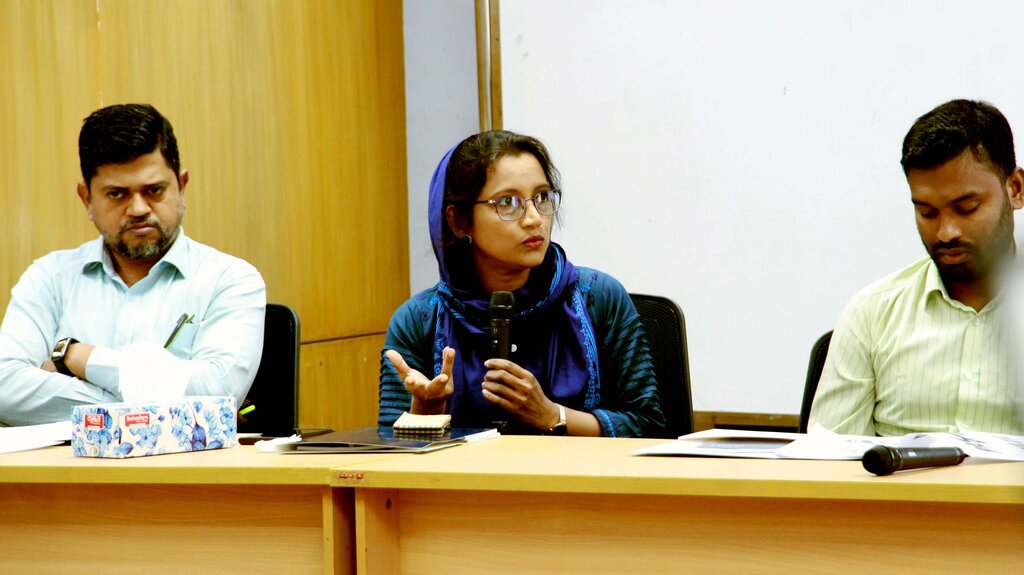
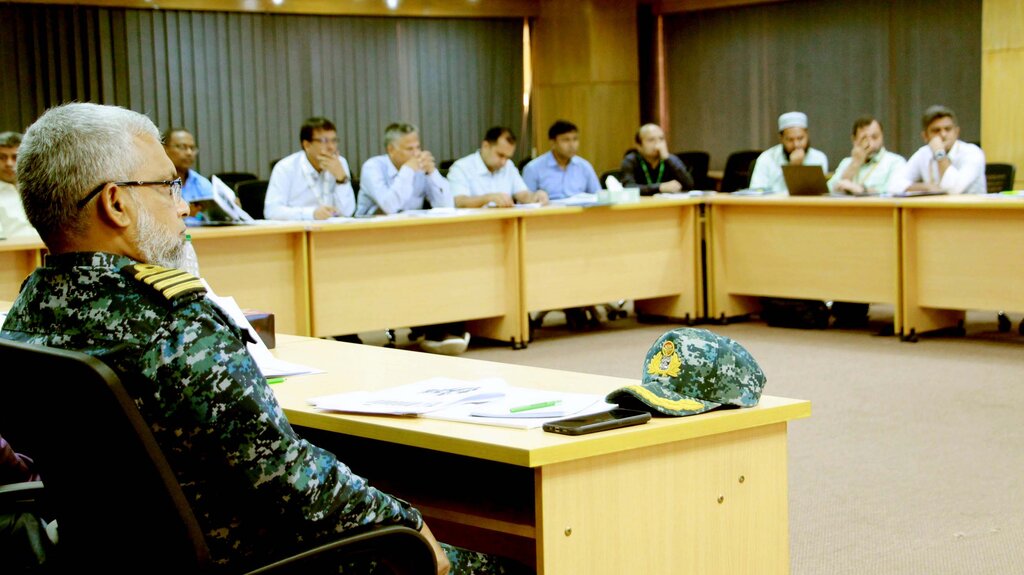
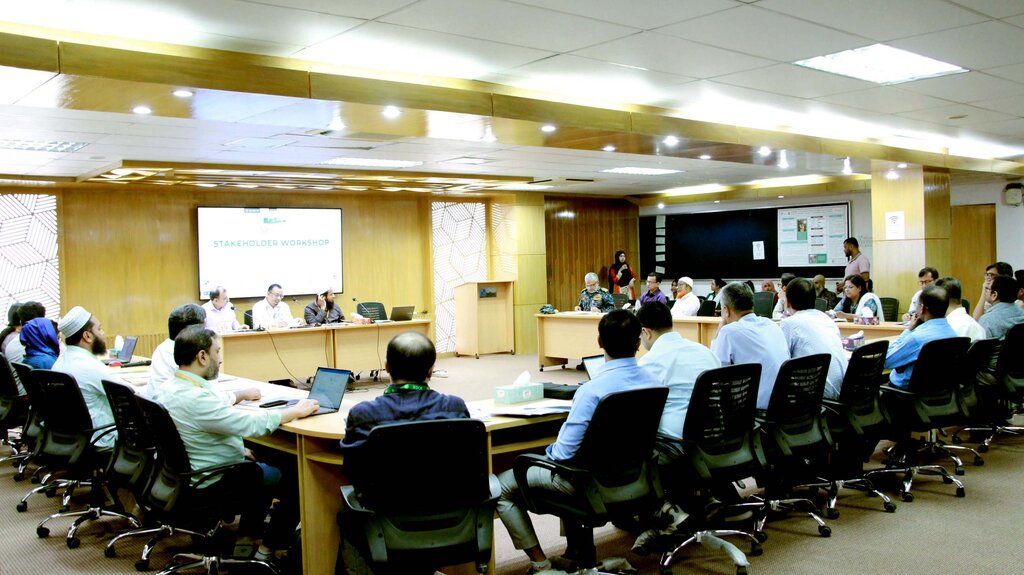
The workshop offered an overview of fecal exposure pathways to the human body and explored how the SaniPath tool can help identify the most critical pathways for targeted preventive interventions, using a case study for illustration. Additionally, a brief introduction to the PROMISE Consortium was presented. A Q&A session followed, where participants raised questions and provided feedback on the scope and challenges of using the SaniPath tool.
Ms. Nargis Akter, National Project Officer – WASH & Environment at WHO, emphasized the importance of mainstreaming the SaniPath tool into monitoring systems such as the Sanitation Safety Plan (SSP) and Shit Flow Diagram (SFD). Similarly, Md. Habibur Rahman, WASH Specialist at IsDB, highlighted the need to identify the root causes of fecal contamination across various exposure pathways to effectively utilize the tool. He also stressed the importance of determining health outcomes using the SaniPath tool.
The workshop provided participants with an opportunity to understand both the strengths and limitations of the SaniPath tool.





